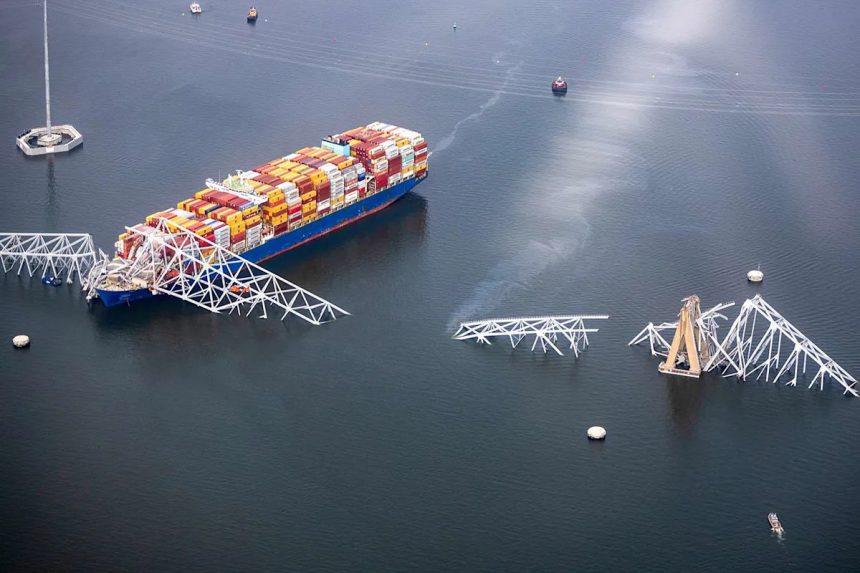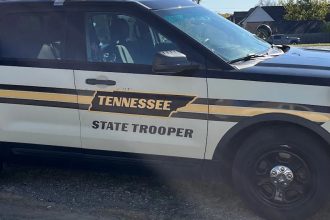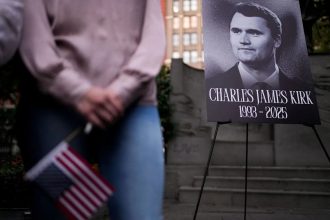NEED TO KNOW
-
The cargo ship Dali collided into Baltimore’s Francis Scott Key Bridge on March 26, 2024, leading to a fatal collapse
-
The NTSB held a hearing on Nov. 18 to discuss the probable cause of the disaster
-
A final report is expected to be released in several weeks
Officials have come to a conclusion about what caused a cargo ship to strike Baltimore’s Francis Scott Key Bridge, which then collapsed, killing six construction workers.
The National Transportation Safety Board (NTSB) held a public board meeting in Washington, D.C., on Tuesday, Nov. 18, to determine the probable cause of the collision between the cargo ship Dali and the bridge on March 26, 2024.
During the hearing, investigators said that a “loose wire in the ship’s electrical system caused a breaker to unexpectedly open — beginning a sequence of events that led to two vessel blackouts and a loss of both propulsion and steering,” according to an NTSB statement.
“Investigators found that wire-label banding prevented the wire from being fully inserted into a terminal block spring-clamp gate, causing an inadequate connection,” the agency added.
CNN reported that NTSB officials said they believe a label was improperly placed when the Dali was under construction.
Although it took about a minute for the Dali’s crew to restore power after the initial blackout, a second outage followed because of lack of fuel pressure, after a flushing pump to provide fuel for the ship’s generators stopped and needed to be manually restarted, ABC News reported.
The crew of the Dali was unable to regain control of the ship in time to avoid hitting the bridge.
“Investigators found that the pilots and the bridge team attempted to change the vessel’s trajectory, but the loss of propulsion so close to the bridge rendered their actions ineffective,” the NTSB wrote in its news release.
“Contributing to the collapse of the Key Bridge and the loss of life was the lack of countermeasures to reduce the bridge’s vulnerability to collapse due to impact by ocean-going vessels, which have only grown larger since the Key Bridge’s opening in 1977,” the NTSB added.
Six construction workers who were on the bridge died from the collapse. Another worker survived but sustained serious injuries, and one crew member from the Dali suffered minor injuries.
Tuesday’s NTSB hearing noted the challenge of finding one loose wire amid thousands of wires, comparing it to trying to locate a loose bolt in the Eiffel Tower, according to NBC affiliate WBAL.
NTSB investigator Todd Gianellon said at the hearing the Dali’s crew occasionally checked the almost 1,000-foot ship’s wiring system but had no guidelines on inspecting individual wire connections.
He also noted that the ship was not required to use infrared thermal imaging that could have detected the troublesome wire, according to the Associated Press.
Never miss a story — sign up for PEOPLE’s free daily newsletter to stay up-to-date on the best of what PEOPLE has to offer, from celebrity news to compelling human interest stories.
NTSB Chairwoman Jennifer Homendy said in her opening remarks at the hearing that the tragedy could have been avoided.
“On behalf of the entire agency, I want to extend my deepest sympathies to the families and friends who lost loved ones in this truly heartbreaking tragedy, as well as the survivors who were injured,” she said.
“The fact is, we shouldn’t be here today; this tragedy should’ve never occurred … lives should’ve never been lost. As with all accidents we investigate, this was preventable,” she continued.
The complete final NTSB report on the incident is expected to be released in several weeks.
Read the original article on People









